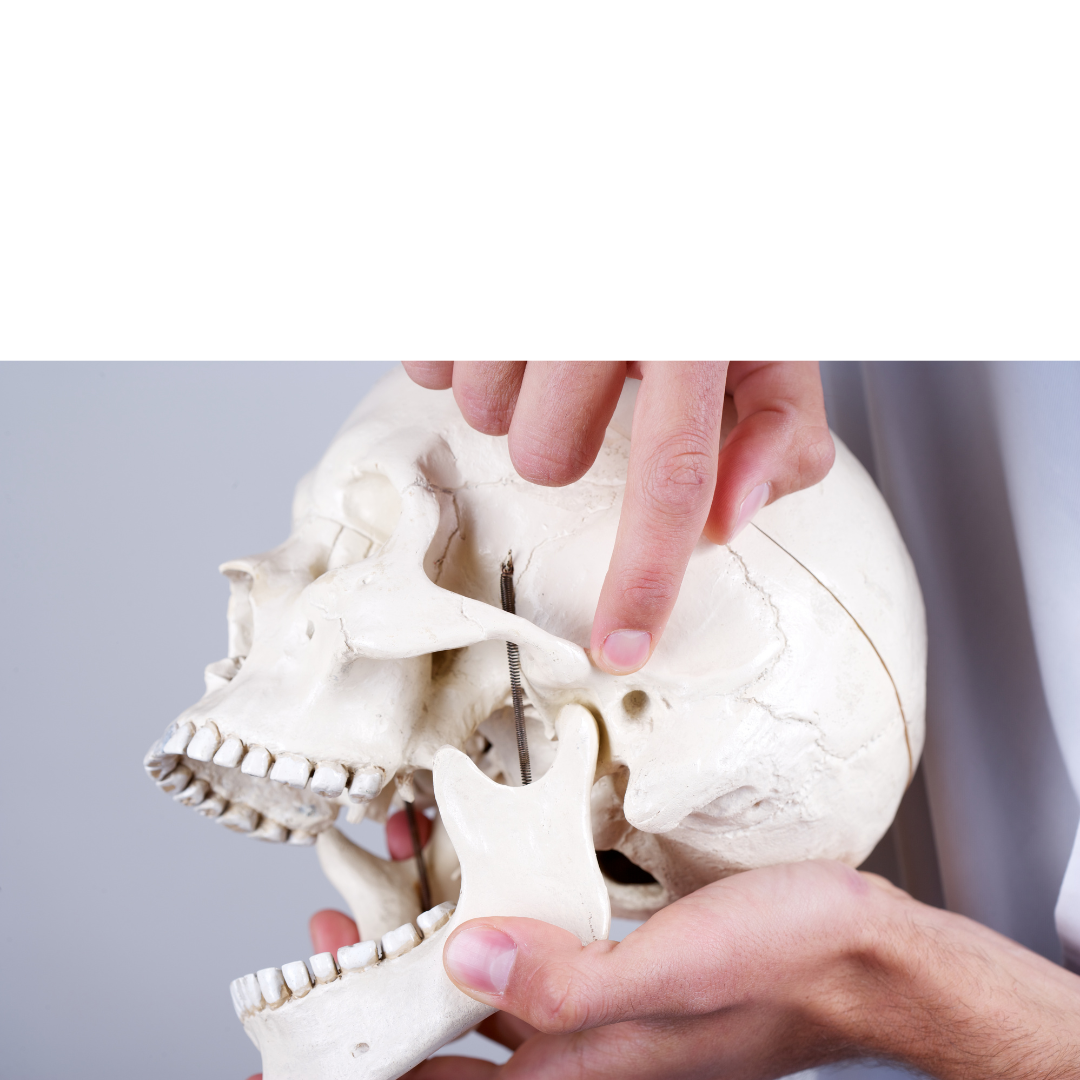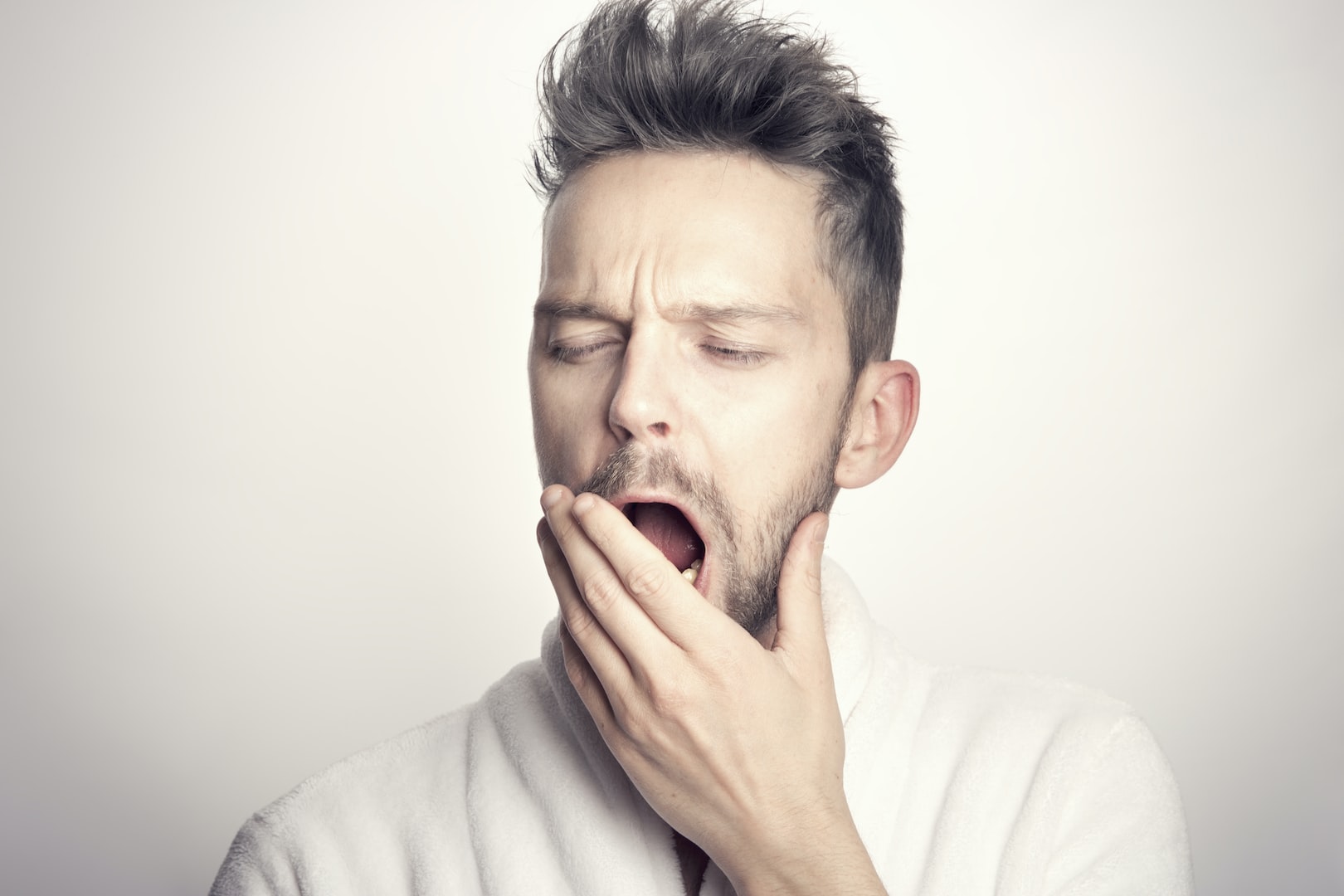
VERTIGO
647-425-4669
TMJ Disorders
What is TMJ?
The temporomandibular joint (TMJ) is a complex joint that connects the lower jaw (mandible) to the temporal bone of the skull. It's located just in front of each ear. The joint is composed of the mandibular condyle, a rounded projection of the lower jaw, and the articular fossa of the temporal bone. Between them is a disc made of cartilage that acts as a cushion during jaw movements.
The TMJ is crucial for various oral functions, including biting, chewing, speaking, and yawning. It allows for both hinge-like movements (opening and closing the mouth) and sliding movements (side-to-side and forward-backward). Usually, the TMJs are pain-free and can move with little problems. Because the muscles and joints work together, a problem with either one can led to pain, stiffness, headaches, bite problems, clicking and/or a locked jaw.

TMJ Disc Displacement and Locked Jaw
TMJ disc displacement refers to a condition where the articular disc within the TMJ is not in its normal position or alignment. In a healthy TMJ, this disc acts as a cushion, providing smooth movement and reducing friction between the bones. However, in cases of disc displacement, the disc may shift from its normal position, leading to various symptoms and potential issues.
There are three different types of disc displacements:
Disc Displacement with Reduction: In this type, the disc moves out of its normal position during jaw movement but returns to its proper place when the jaw is at rest. This can be associated with clicking or popping sounds during jaw movements.
Disc Displacement without Reduction: In this case, the disc does not return to its normal position, even when the jaw is at rest, and is often a progression of disc displacement with reduction. This may result in limited jaw movement (locked jaw), joint pain, and a more constant discomfort.
Disc Perforation or Degeneration: Over time, the TMJ disc can undergo changes such as perforation or degeneration, affecting its structure and function.
What Causes TMJ Disorders?
TMJ disorders are common and can affect people of all ages. TMJ is most often cause by:
Physical Trauma: Injuries to the jaw or head can contribute to TMJ disorders.
Bruxism (Teeth Grinding or Clenching): Habitual grinding or clenching of teeth, especially during sleep, can strain the TMJ.
Arthritis: Conditions like rheumatoid arthritis or osteoarthritis can affect the TMJ.
Stress: Emotional and psychological stress may lead to jaw clenching or grinding, contributing to TMJ disorders.
Posture: Poor posture can alter mechanical forces on the jaw, resulting in poor tracking, misalignment and TMJ dysfunction.
TMJ Symptoms
Clicking, popping, or cracking when opening or closing the mouth
Pain in one or both jaws, surrounding muscles, neck and/or head
Difficulty and/or pain with yawning
Ringing in the ears or a “clogged” sensation
Sidewards movement of the jaw when opening/closing
Jaw locking open or closed
Frequent headaches, often around the temples, eyes and forehead
Worn down or misaligned teeth

What is Involved in the Initial Assessment?
A TMJ assessment involves a comprehensive examination to evaluate the TMJ and surrounding structures. The physiotherapist will start by taking a detailed medical history, including information about any symptoms, pain patterns, and factors that may contribute to TMJ disorders, such as recent injuries, teeth grinding, or stress.
The Clinical Examination will focus on these areas:
Jaw Movement: The physiotherapist will observe and measure the range of motion of your jaw, checking for any limitations or abnormalities during activities like opening, closing, and lateral movements.
Muscle Palpation: The muscles around the jaw and neck will be palpated to identify areas of tenderness, swelling, or muscle spasms.
Joint Sounds: The physiotherapist may listen for any clicking, popping, or grating sounds that occur during jaw movements.
Bite: The physiotherapist may examine your bite and how your upper and lower teeth come together (occlusion). Misalignment or problems with the bite can contribute to TMJ issues.
How is the TMJ Treated?
Based on the results of the assessment, the physiotherapist will develop an individualized treatment plan. TMJ rehabilitation typically begins with a specific neuromuscular exercise program addressing the postural muscles and the muscles in the neck, shoulders and specifically around the TMJs and tongue.
Manual therapy of the jaw and neck is often required as well as modalities such as ultrasound, acupuncture, heat and/or electrical stimulation to decrease pain and discomfort. Lastly, relaxation, stress management, sleep hygiene and breath work form an integral part of your therapy.
Quick Tip!
The ideal resting position of a healthy jaw is with the tongue on the roof of the mouth, teeth slightly apart, and lips closed as you breathe through your nose.
Can TMJ Disorders be Prevented?
Preventing TMJ disorders involves adopting healthy habits and making lifestyle changes to reduce the risk of jaw dysfunction and associated symptoms. While not all cases of TMJ disorders can be prevented, the following strategies may help minimize the likelihood of developing or exacerbating these conditions:
Maintain Good Posture: Poor posture can contribute to jaw and neck strain. Practice good posture to ensure that your head, neck, and spine are properly aligned.
Avoid Excessive Jaw Movements: Limit activities that involve excessive jaw movements, such as chewing gum, biting your nails, or excessively clenching your jaw.
Manage Stress: Stress can contribute to teeth grinding and jaw clenching, which are common factors in TMJ disorders. Practice stress-reducing techniques, such as meditation, deep breathing exercises, or yoga.
Be Mindful of Jaw Clenching and Grinding: If you notice that you clench your jaw or grind your teeth, especially during sleep, consider using a mouthguard or splint to protect your teeth and alleviate pressure on the TMJ.
Avoid Excessive Chewing and Large Bites: Eating hard or tough foods in excess can strain the jaw. Opt for a diet that includes softer foods and cut foods into smaller, manageable pieces.
Stay Hydrated: Dehydration can contribute to muscle tension. Ensure you are adequately hydrated throughout the day.
Take Breaks During Repetitive Activities: If your work or daily activities involve repetitive jaw movements (such as talking on the phone for extended periods), take breaks to rest your jaw and perform gentle jaw stretches.
Practice Relaxation Techniques: Incorporate relaxation techniques into your routine to reduce overall muscle tension. Progressive muscle relaxation and guided imagery are examples of techniques that can be helpful.
Regular Dental Check-ups: Regular dental check-ups allow your dentist to monitor your bite, identify any signs of teeth grinding, and address dental issues that could contribute to TMJ disorders.
Avoid Excessive Caffeine and Stimulants: Stimulants like caffeine can contribute to muscle tension. Moderating your intake may help reduce the risk of jaw clenching and associated symptoms.
Exercise and Stretching: Engage in regular exercise to promote overall well-being. Specific jaw exercises and stretches may also be beneficial in maintaining jaw flexibility and reducing tension.
Do I need a Referral?
No referral is required, but it is recommended that you are assess by your dentist prior to commencing a TMJ rehabilitation program.
TMJ Treatment Near Me!
Healing Vertigo has advanced physiotherapists with 10+ years of experience in treating TMJ disorders. We provide care in-person at our clinic in Hamilton as well as virtually to individuals across Ontario. Contact us today to learn more or book an appointment!
Disclaimer: This advice is not meant to be a substitute for advice from a medical professional regarding diagnosis, prognosis, or treatment. Always seek advice from your physician, physiotherapist, or other qualified healthcare provider with questions you may have regarding a healthcare condition. The information of this website and email, including but not limiting to text, graphics, videos, images, and other materials are for informational purposes only. Reliance on the information on this website and email is soley at your own risk.